Bam, Iran
Bam, a small town in far south-eastern Iran, shot to the headlines on Boxing Day 2003 when it was almost levelled by a 6.6 magnitude earthquake. Two years later I visited, camera in hand, notepad and pen at the ready.
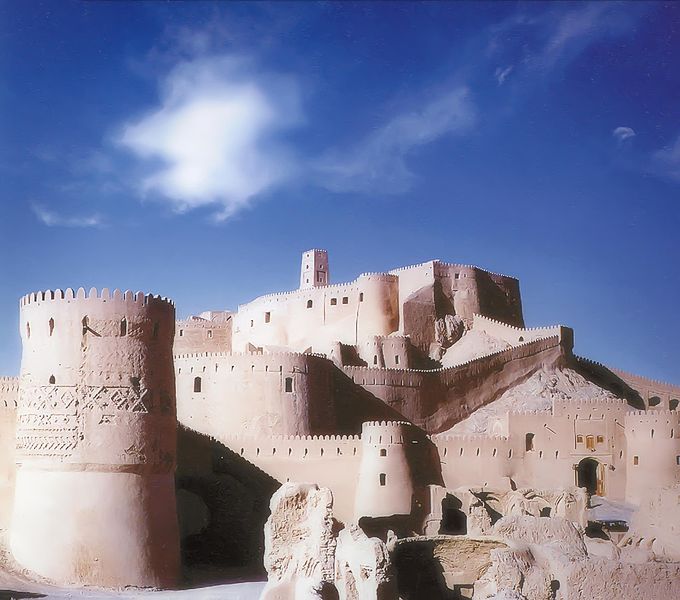
Bam citadel before the earthquake (Image: Wikimedia Commons)
I set out for a day trip to Bam from Kerman. What used to be special about Bam was the stunning citadel (fortress) on the outskirts of the town. Bam was also ringed by date palm plantations; many of the world’s dates originate here.
Driving in to town, I caught sight of a bunch of date palms first. We drove past them, then into a sort of barren wasteland. Five minutes later we were in the bus terminal. Those date palms were part of the city ‘ring’ – the desert wasteland directly afterwards was where the outer suburbs used to be. The 2003 earthquake was so extraordinarily powerful that entire suburbs were simply wiped from the map. It was later explained to me by a Kerman travel agent that many homes in this area were reduced to rubble when the quake struck at 5:30 that morning; the families sleeping inside disappeared with the suburbs. Much of Bam has not been rebuilt because there is no-one to rebuild it for; the population was reduced by 26,000 in a few minutes.
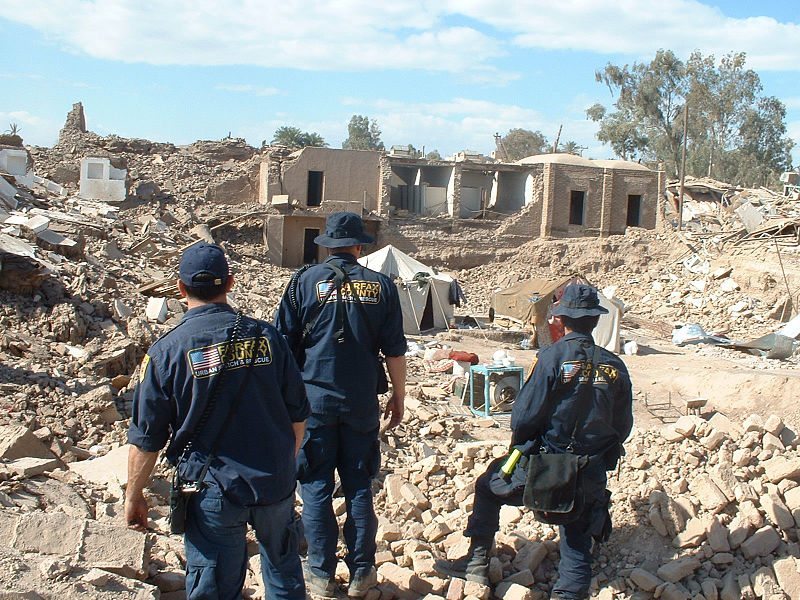
Remains of Bam, Iran (Image: Marty Bahamonde, Wikimedia Commons)
Although Bam was slowly recovering, even as a visitor I could tell it is still a broken town. Many shops were operating out of open-sided shipping containers. Several families were still living in tents. There was an over-abundance of taxis; when people lost their jobs (because either their workplace, employer or customer base had disappeared), many were left with no other choice but to run their cars around town for money. The bus terminal was being used by the Red Cross, and buses now pull in across the road where bus companies had set up ticket offices in demountable blocks.
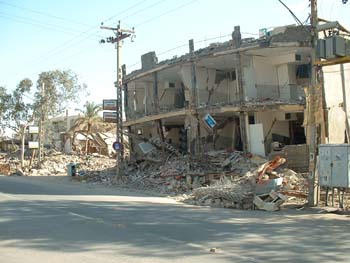
(Image: Marty Bahamonde, Wikimedia Commons)
By walking around Bam, I could only then understand how truly horrible the aftermath would have been. I thought I was prepared after seeing the news images of a destroyed town, but that portrays just a fraction of what really happened. Entire families just ceased to exist. Strangers explaining to confused children why they can’t find their parents. This story was relayed to me by a local taxi driver; he spoke of it so casually, like it was normal. To live through an event like that, I guess you would have no other way to deal with it.
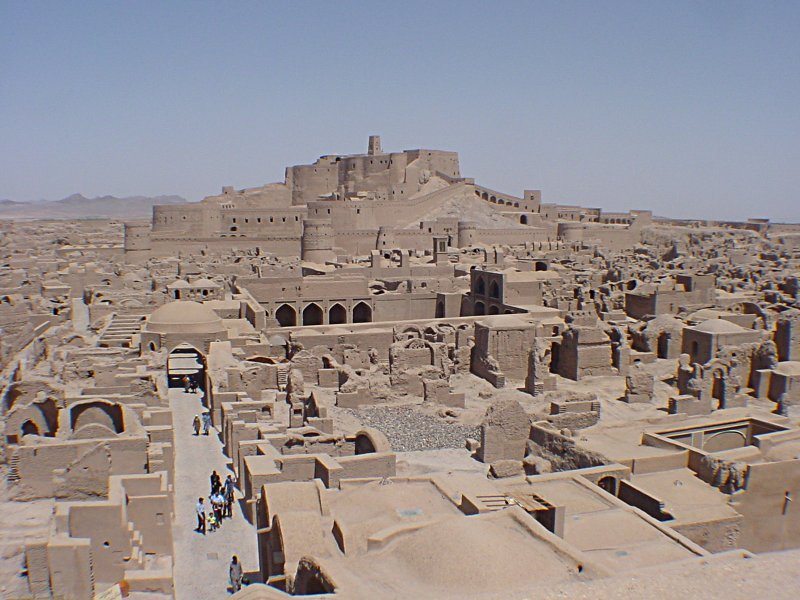
Bam citadel before the earthquake (Image: Benutzer, Wikimedia Commons)
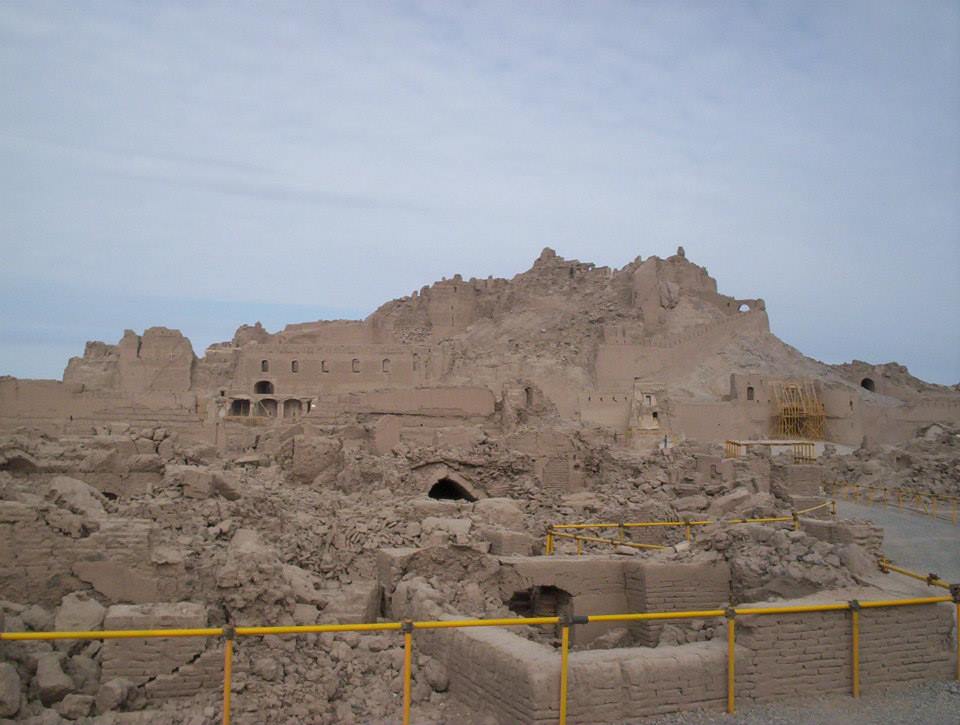
Bam citadel after the earthquake
When I visited Bam citadel was still an attraction. It was a fortress built on a hill, surrounded on all sides by 2 kilometres of mud-brick homes and traditional shops. In 2005 the citadel was a collection of shattered mud brick buildings and walls, although the most beautiful part, the fortress itself, was the also the most solidly built and remains partly intact. The authorities had cleared a path through the rubble for visitors to wander through.
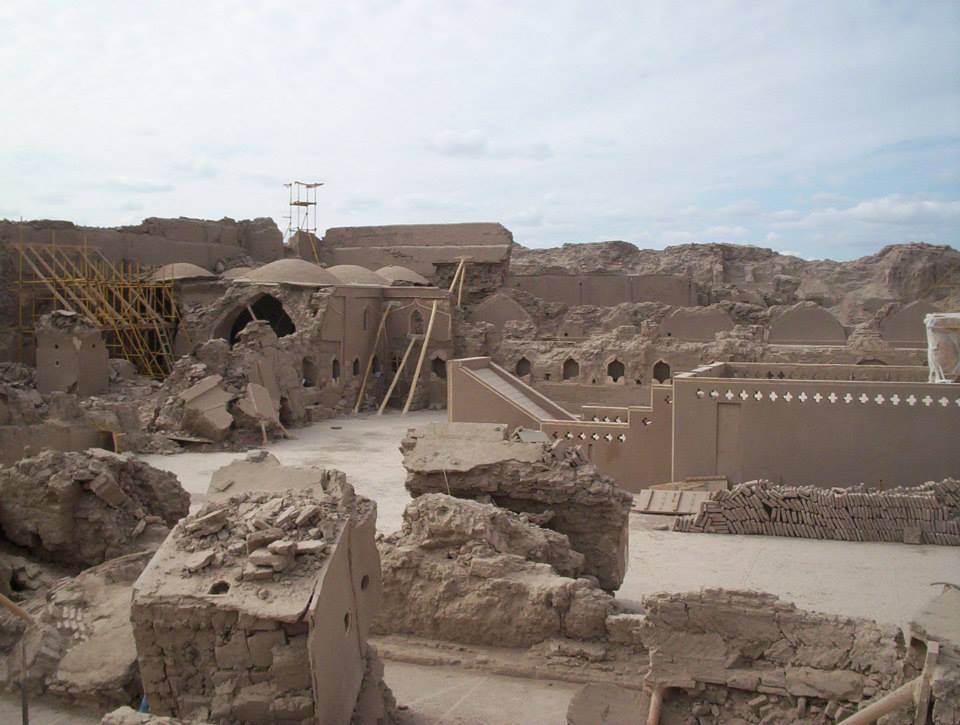
The ‘town’ section of Bam citadel after the earthquake
Even though it was mostly destroyed it was still inspiring. The vastness of the complex was incredible. Each lane was marked with new signs which explain what used to be there. In some cases a doorway was still standing, with a sign saying if it was a restaurant, a carpet shop or a gift shop. The ‘walk through’ only took about 10 minutes; much of the complex was still too unstable to visit, but I could walk right to the base of the fortress. In one section I could even see workers crushing the mud-brick rubble into a wheel barrow, adding water then re-setting the mud-bricks.
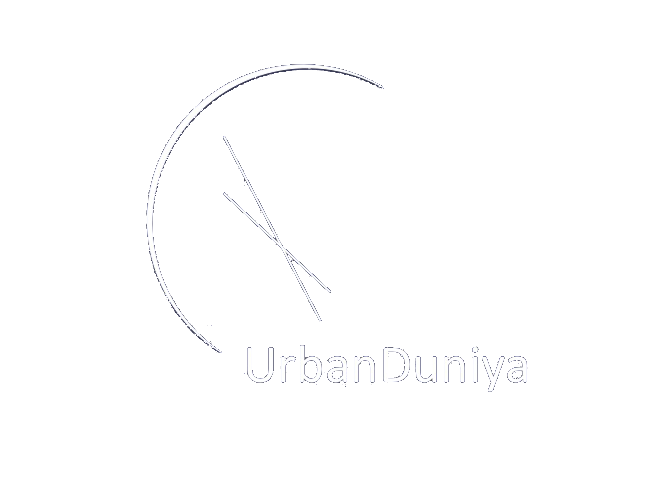
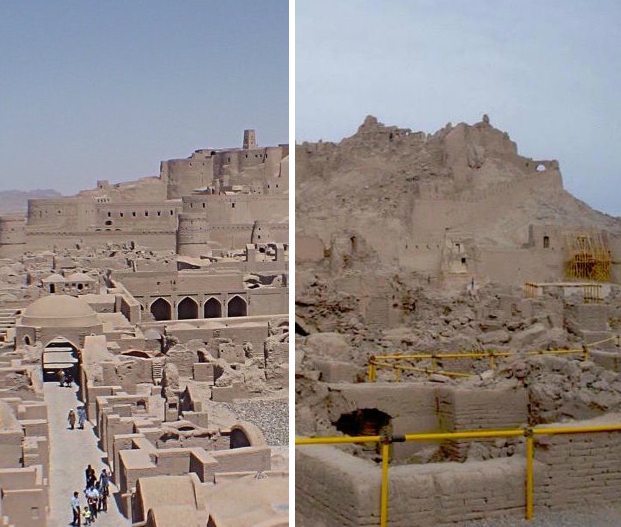



i remember the bus going through Bam shortly after the earthquake in 2004. My host’s parents both died in the quake. I didnt feel any compulsion to visit at the time as one might imagination. It’s very sad that history has been destroyed, and yet the lives lost is of course foremost in my mind.
I can totally understand. I was very conscious that my trip to Bam could have been construed as “dark tourism”; visiting disaster zones for voyeuristic purposes rather than to help or contribute to the recovery.
I was mostly interested to see the fort – it had been on my wish list before the earthquake, so I decided to visit anyway – I was there 2 years after the quake. I also had the encouragement of some people in nearby Kerman, who said that the town was suffering from a lack of tourism, and therefore anyone who visited there to spend some tourist dollars would be welcomed.
First and foremost, it is a human tragedy – the scale of which is unimaginable.